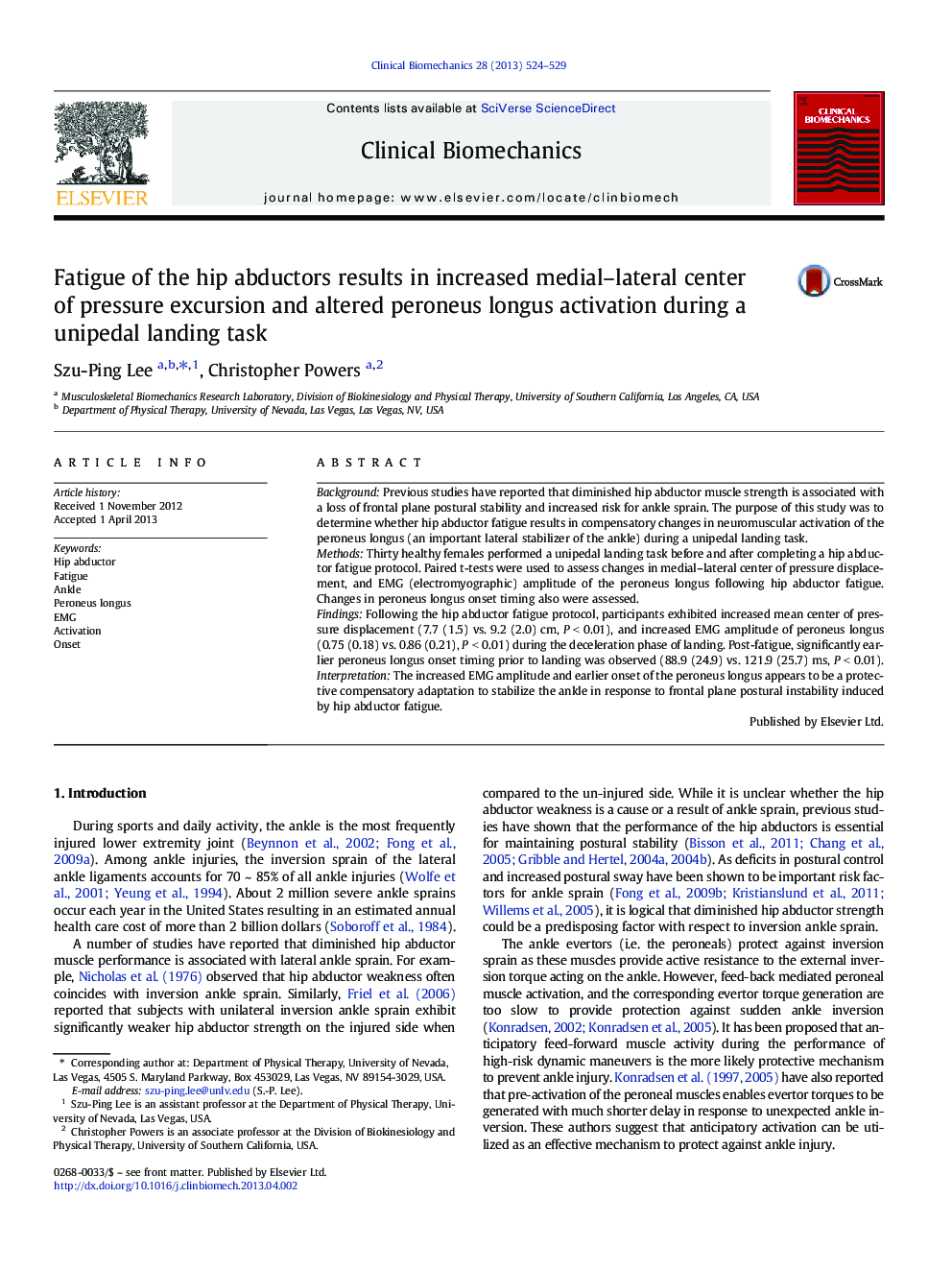| Article ID | Journal | Published Year | Pages | File Type |
|---|---|---|---|---|
| 4050699 | Clinical Biomechanics | 2013 | 6 Pages |
BackgroundPrevious studies have reported that diminished hip abductor muscle strength is associated with a loss of frontal plane postural stability and increased risk for ankle sprain. The purpose of this study was to determine whether hip abductor fatigue results in compensatory changes in neuromuscular activation of the peroneus longus (an important lateral stabilizer of the ankle) during a unipedal landing task.MethodsThirty healthy females performed a unipedal landing task before and after completing a hip abductor fatigue protocol. Paired t-tests were used to assess changes in medial–lateral center of pressure displacement, and EMG (electromyographic) amplitude of the peroneus longus following hip abductor fatigue. Changes in peroneus longus onset timing also were assessed.FindingsFollowing the hip abductor fatigue protocol, participants exhibited increased mean center of pressure displacement (7.7 (1.5) vs. 9.2 (2.0) cm, P < 0.01), and increased EMG amplitude of peroneus longus (0.75 (0.18) vs. 0.86 (0.21), P < 0.01) during the deceleration phase of landing. Post-fatigue, significantly earlier peroneus longus onset timing prior to landing was observed (88.9 (24.9) vs. 121.9 (25.7) ms, P < 0.01).InterpretationThe increased EMG amplitude and earlier onset of the peroneus longus appears to be a protective compensatory adaptation to stabilize the ankle in response to frontal plane postural instability induced by hip abductor fatigue.
